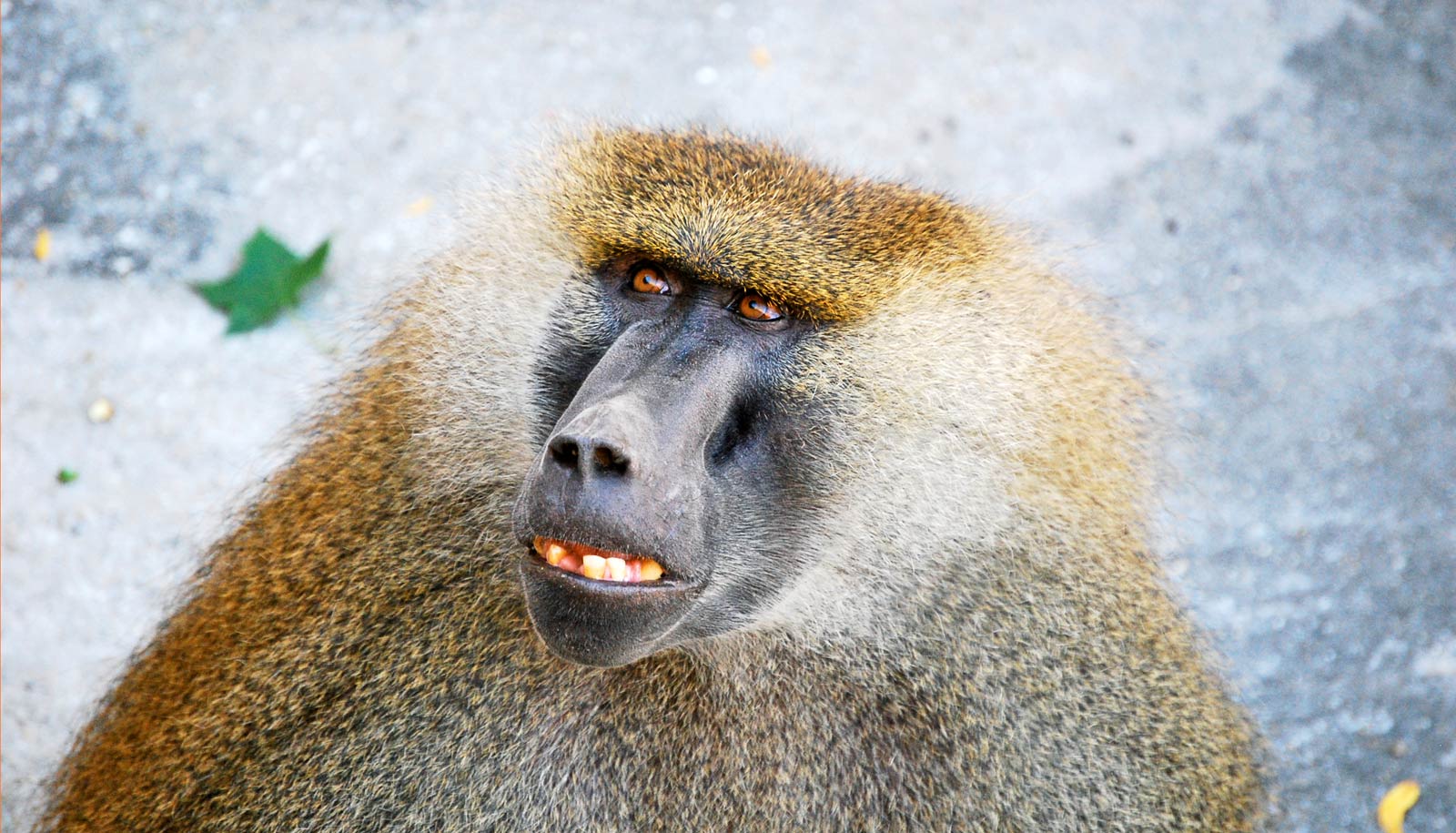Like some people, some baboons are more like wallflowers, while others hang out in the thick of the crowd.
New research shows that some wild baboons are consistently found in the vanguard of their troop while others crowd to the center or lag in the rear.
Using high-resolution GPS tracking, Margaret Crofoot, assistant professor at the University of California, Davis, and her team of researchers continuously monitored the movements of nearly an entire baboon troop in central Kenya to discover how interactions among group-mates influenced where in the troop individuals tended to be found.
“How animals position themselves within their social group can have life or death consequences,” explains Crofoot, an anthropologist. “Individuals at the front of their group may get the first crack at any food their group encounters, but they are also more vulnerable to being picked off by predators.”
Baboons with ‘boyfriends’ live longer
Interestingly, the team’s work suggests that very simple behavioral rules may explain baboons’ apparent preferences for particular spatial positions. “Animals who pay attention to more of their group-mates when deciding where to move will inevitably end up at the center of their group,” says Crofoot. Differences in social sensitivity may therefore explain why younger baboons end up in the safest positions at the center of their troop, while adult males find themselves exposed on the leading edge.
Researchers have long noted that spatial positioning has important fitness implications, but where an animal is positioned in its group depends not only on its own behavior, but also on the behavior of its group-mates. “How natural selection shapes such emergent properties is fundamental to understanding the evolutionary dynamics of social organisms,” Crofoot says.
The findings appear in the journal Proceedings of the Royal Society.
Funding came from the National Science Foundation, Office of Naval Research, Army Research Office, and Human Frontiers Science Program.
Source: UC Davis



